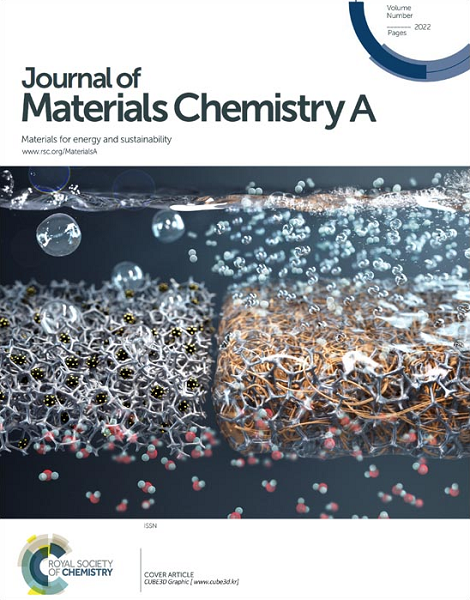Highly oxidative GaN:ZnO@α-Ga2O3 heterostructure as a visible-light-driven round-the-clock photocatalyst for dye degradation and disinfection
IF 10.7
2区 材料科学
Q1 CHEMISTRY, PHYSICAL
引用次数: 0
Abstract
A tough challenge for photocatalysis applied in environmental remediation is the maintenance of a high catalytic activity day and night or through the broken weather. In this study, an unique round-the-clock GaN:ZnO@α-Ga2O3 photocatalyst capable of effective separation and simultaneous storage of photogenerated electrons and holes was constructed by facile post-treatments of soaking segregated wurtzite GaN:ZnO particles in a nonvolatile trihalide ionic liquid of [P44410][Br3] followed by air-annealing. The obtained GaN:ZnO@α-Ga2O3 heterostructure allowed a spontaneous generation of reactive oxygen species including •OH, 1O2 and •O2−. The GaN:ZnO in the heterostructure harvested visible-light, stored photoelectrons, and absorbed O2 at oxygen vacancies (VO) to produce •O2−. For the first time, the gallium vacancy (VGa)-rich α-Ga2O3 was proposed as a hole-storage material in this paper. The point defects of VO and VGa in the α-Ga2O3 played a vital role in absorbing H2O/O2 molecules, trapping photogenerated holes, and forming •OH and 1O2. The α-Ga2O3 is energetically more inclined to adsorb and dissociate H2O molecules at VO, leading to a predominant active species of •OH due to the high valence band edge of 3.918 eV, which endowed the photocatalyst with a strong oxidizing ability. The GaN:ZnO@α-Ga2O3 heterostructure exhibited an excellent catalytic performance to degrade Rhodamine B (RhB) in the solution even in the darkness, and showed high antibacterial activities towards Staphylococcus aureus and Escherichia coli in the dark and under the sun-light irradiation as well. These new findings form a solid base to design and fabricate a highly oxidative visible-light-driven photocatalyst for round-the-clock water/air purification.求助全文
约1分钟内获得全文
求助全文
来源期刊

Journal of Materials Chemistry A
CHEMISTRY, PHYSICAL-ENERGY & FUELS
CiteScore
19.50
自引率
5.00%
发文量
1892
审稿时长
1.5 months
期刊介绍:
The Journal of Materials Chemistry A, B & C covers a wide range of high-quality studies in the field of materials chemistry, with each section focusing on specific applications of the materials studied. Journal of Materials Chemistry A emphasizes applications in energy and sustainability, including topics such as artificial photosynthesis, batteries, and fuel cells. Journal of Materials Chemistry B focuses on applications in biology and medicine, while Journal of Materials Chemistry C covers applications in optical, magnetic, and electronic devices. Example topic areas within the scope of Journal of Materials Chemistry A include catalysis, green/sustainable materials, sensors, and water treatment, among others.
 求助内容:
求助内容: 应助结果提醒方式:
应助结果提醒方式:


